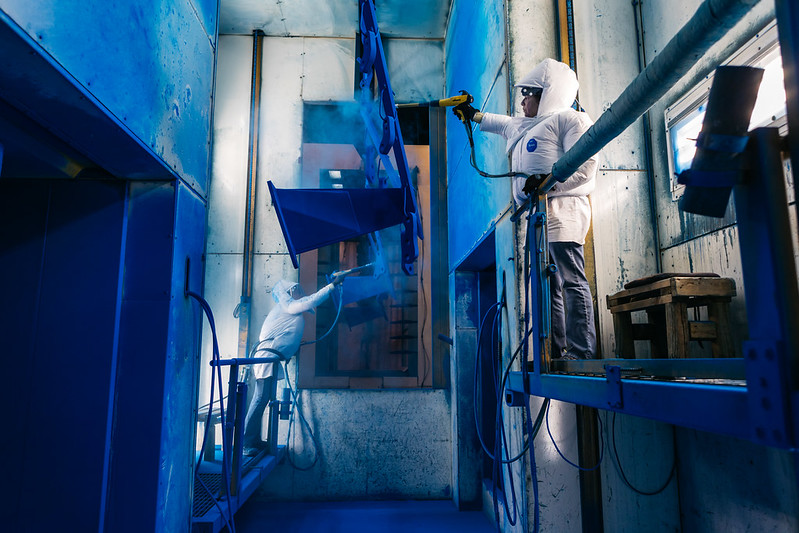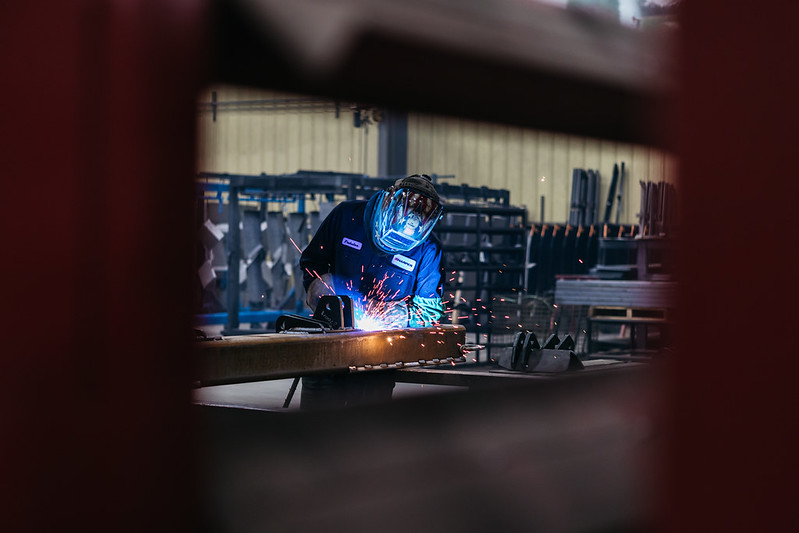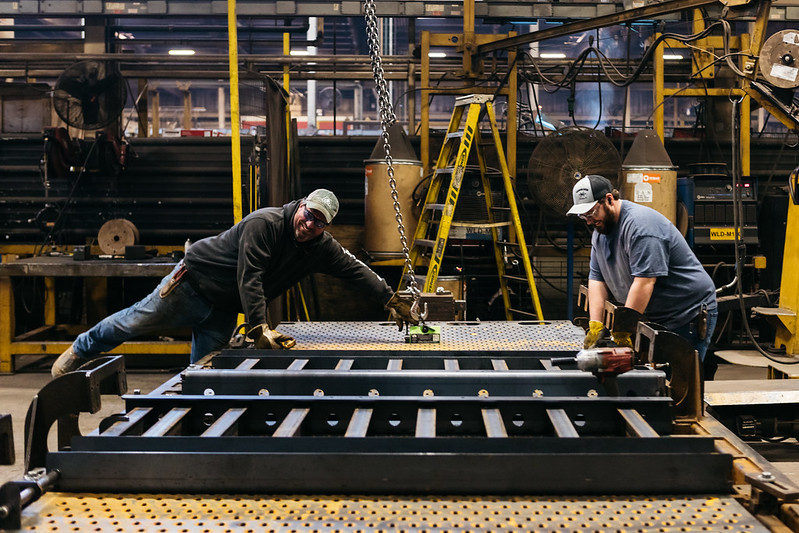The increase in dairy farm productivity over the past 15 years is helping preserve the environment. It’s also helping preserve the overall well-being of the dairy farmer, 97% of whom are involved in family owned farms where the line between work and play is blurry, at best.
“It doesn’t matter how much time you give a dairy farmer, they are always going to work because it is simply who they are,” said Suzanne Meck, chief operations officer at AEM member company AMS Galaxy USA, a provider of precision dairy farming equipment.
In today’s dairy farming industry, however, efficiency-enhancing innovation is giving farmers an opportunity to gain more control of their time. Whether it’s automated equipment, data-collecting sensors, animal health monitors or other technologies, farmers are able to delegate many of the more monotonous tasks that have always consumed big chunks of their day. Now farmers can spend that time on other things, whether that’s looking for ways to diversify and grow, or just carving out a little more family time.
AEM’s new report, “Environmental Benefits of Modern Dairy, Hay, and Forage Production Technologies,” discusses how innovation is helping dairy farmers produce more milk with fewer resources, as well as increase efficiency and optimize the use of their time.
With that in mind, let’s take a look at how innovation is helping transform the way farmers go about managing the different facets of a dairy farming operation, helping them gain control of their time and improve their work-life balance.
Animal health
Improved animal health translates directly to increased animal productivity. Fortunately, the dairy industry has gained a great deal of knowledge over the past several decades regarding cow biology and physiology.
Devices that monitor cow health and activity play directly into it. By monitoring for things like rumination changes or reduced walking, these devices help identify cows that are sick before they begin showing signs of sickness. Then dairy farmers can be more proactive with their treatment.
Tracking devices can also be beneficial, especially on large dairy farms where physically monitoring large numbers of cows is incredibly time-consuming.
“On our CEO Brad Biehl's own personal farm, for example, we contract with a breeder and use GPS on our cows,” Meck said. “The breeder logs into an app to see which cows need to be bred that day. GPS tells the breeder exactly where each cow is located in the barn. That cow is bred, and we never even have to talk to the breeder.”
Robotic milking
A dairy farmer has always been tied to cow’s schedule. That doesn’t have to be the case anymore.
“Installing a robotic milking system allows you to have a more flexible schedule,” Meck said. “Generally speaking, you won’t have to miss your kid’s 5 o’clock concert because your milking window is from 4 to 7. Cows milk themselves around the clock. Maybe you can even stay out a bit later one night because you don’t have to worry about getting up at the crack of dawn the next morning to start chores.”
That doesn’t mean there won’t be the occasional instance where a robotic system needs a little maintenance that could interrupt a family dinner. But by and large, robotic milking equipment grants more schedule flexibility because the farmer doesn’t have to be completely hands-on, 24/7.
A robot can also be a pretty good farm hand.
“Automation helps eliminate some of the more monotonous activities that not every dairy farmer wants to do,” said AEM Director of Agriculture Services Austin Gellings. Gellings pointed to tasks like putting cups on teats and spraying each one individually. “With a robotic system, you no longer have to do that. And now you have some time to do those things you never seemed to be able to get to.”
“It doesn’t matter how much time you give a dairy farmer, they are always going to work because it is simply who they are.” -- AMS Galaxy's Suzanne Meck
Advanced feeding
Robotic feeding equipment eliminates some monotonous dairy farming tasks, as well. But according to Meck, there are additional advantages that are even more beneficial.
First is efficiency. “A lot goes into mixing feed for cows,” Meck said. “You’re running tractors and skid loaders. You’re burning diesel. A lot of time goes into it. Advanced feeding systems, on the other hand, are typically battery-powered. Cutting down on that fuel cost is hugely beneficial.”
Secondly, any misstep in the creation of the final feed ration can have a significant impact on both animal health and milk production.
“When you switch to automation, as long as you’re setting everything up the way you’re supposed to, the machine is going to mix the feed exactly the same way, every single time,” Meck said. “You no longer have to worry about human error. This helps ensure that the highest-quality ration is being delivered to every single cow, every single day.”
Feed testing
Feed quality starts with the quality of the crop coming out of the field. Technology is helping dairy farmers here, too.
NIR (near infrared) sensors, which are attached to harvesting equipment, test the crop at a typical rate of 4,000 times per second. The traditional, manual method results in an average of 15 to 20 tests per season. By utilizing NIR sensors, the dairy farmer is spared from having to coordinate those manual feedstock tests. Additionally, data quality is better because it is faster and more robust. This allows the farmer to quickly make any necessary adjustments, helping ensure that the ration is exactly what the cow needs.
Additional field-related technologies are helping dairy farmers take control of their time. Auto Steer on tractors is a key innovation. Gellings said studies show how Auto Steer greatly reduces the stress a farmer is under while operating machinery. Additionally, Meck said farmers appreciate the fact that Auto Steer allows them to plant after dark because the tractor is self-guided by GPS.
“Automation helps eliminate some of the more monotonous activities that not every dairy farmer wants to do." -- AEM's Austin Gellings
Barn management
There are two ways technology is making a big impact in the area of a dairy farm where some of the farmer’s least favorite chores take place: the barn.
Automated barn cleaning equipment delivers three benefits: farmer saves time, barn is kept cleaner, animal health is improved. This innovation is especially helpful on farms that have also migrated to a robotic milking system. That’s because robotic milking systems result in cows that are spending a lot more time in the barn all day. That makes it more challenging for the farmer to get in there and complete chores.
“It’s more efficient and less stressful for everybody if there is some kind of automated manure cleaning system,” Meck said. “There are many options, including a flush system, a variety of scrapers, and now robotic manure collectors that drag through the barn and take the manure to a deposit area. This automated equipment also does a really good job because it’s running around the clock.”
Automated bedding equipment also helps reduce a dairy farmer’s stress level, not to mention the cows’. First, the farmer doesn’t have to drive a skid loader around the stalls anymore. Secondly, bedding can happen on a more frequent basis, which benefits both the cow and the farmer’s bottom line.
“Automation allows farmers to bed three or four times a day, as opposed to once or twice a week doing it the manual way,” Meck said. “Cows like that fresh bedding more frequently. Bedding waste is also reduced because you’re putting smaller quantities in at a time, reducing the chances of the cows kicking most of it out.”
Telematics
Sensors on today’s dairy farm equipment help farmers monitor how the equipment is performing. This helps reduce stress and save time by granting the farmer the ability to proactively service equipment before it breaks down.
Telematics can actually be deployed all over the farm. Sensors on chemical drums can help alert farmers to any potential leaks. Lagoon monitoring can provide feedback on manure levels, alerting a farmer if something isn’t working properly.
“Being able to get ahead of some of these issues, as opposed to being rushed in the moment of crisis, will not only help reduce waste and cost, but also an incredible amount of stress,” Gellings said.
Reducing stress and saving time are the two biggest ways dairy farmers are improving their work/life balance today. Make no mistake, a dairy farmer’s quality of life has always been tethered to an abundance of hard work—and that’s something that will probably never change. But thanks to today’s technologies that are making dairy farms exponentially more efficient, now it’s just a matter of where the farmer is going to direct his or her efforts.
The Association of Equipment Manufacturers (AEM), The National Milk Producers Federation and Dairy Farmers of America, issued a study quantifying the benefits of modern dairy technologies and how they have positively impacted consumers, dairy farmers and cows over the past 15 years.
The study was unveiled at World Dairy Expo in Madison, Wisconsin late last year.
For more AEM member perspectives, subscribe to the AEM Industry Advisor.





